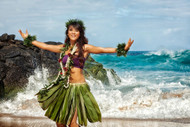Traditional Hula Outfits For Different Hawaiian Occasions
Posted by Maris on 10th Aug 2023
‘Pa’u’ (a skirt) and pāʻū ma ōlō (a shirt) are the two main components of a traditional hula outfit. While other accessories like an ʻahu ʻai (a skirt cover) or lei, maile vines, or coconut leaves may also be used as accents. Hula dancer costumes are traditional Hawaiian dresses, and there are differences between women and male.
Pa’u’
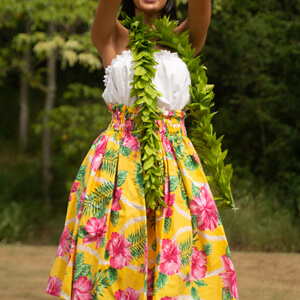
Both men and women frequently wear the traditional Hawaiian “pa’u,” or skirt. It was once used as a kind of loincloth before changing into the ornamental garment it is now.
The blouse, or pāʻū ma ōlō, has one point at the top and is shaped like an inverted triangle. Lace or material comparable to it is frequently used to make it. Depending on whether it will be worn as a hula costume, a lua (a traditional Hawaiian martial art), or a formal dress, the shape of this garment can range from straightforward to whimsical.
Traditional hula outfits are in higher demand these days because they enable female dancers to take part completely in team sports like volleyball while wearing their traditional garb. These needs are now being met by a variety of designs that are less exposed than the original p ma l. These often provide just enough coverage to be worn comfortably while exercising without running the danger of getting hurt, yet they still expose some flesh to give them a feminine, attractive appearance while still remaining modest.
Grass Skirts Are Traditional Hula Outfits
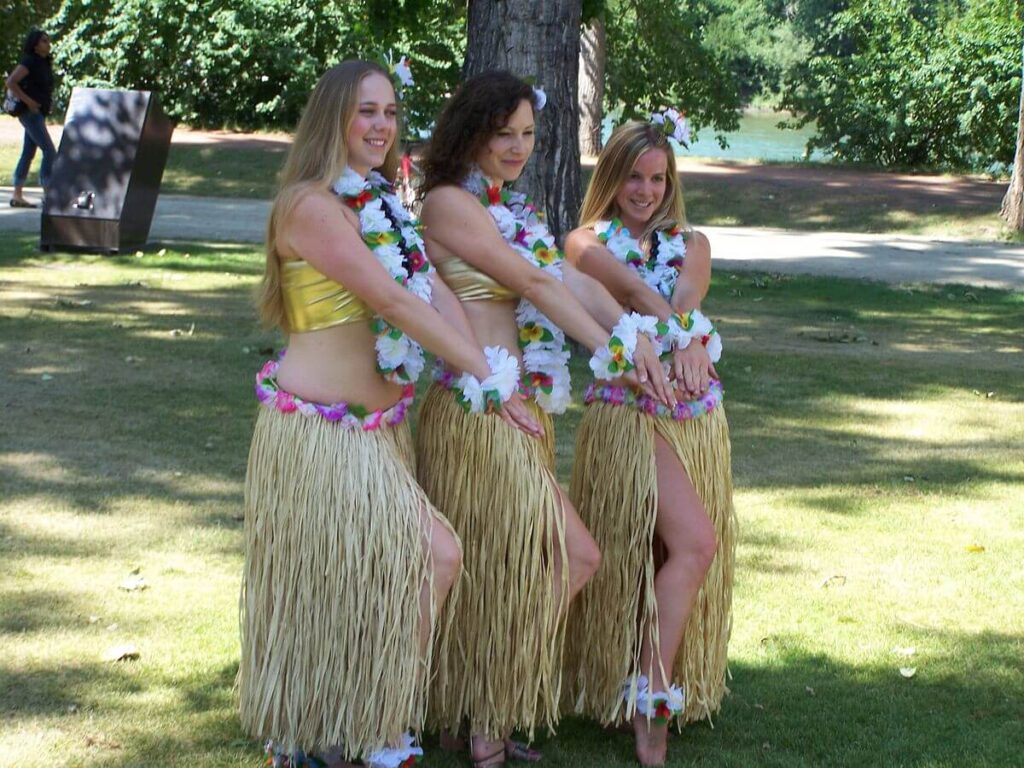
Because the modern Hula was originally formed of blades of the local ti plant that were weaved together in one continuous strip and then coiled up into an elasticized cylinder before being sewed at each end to form a tube, Hula Dancers typically wear accessories like Hawaiian grass skirts. When the music describes the performance, dancers’ smooth rolling hip motions will provide kinetic energy. Men occasionally donned aloha hula skirts in Hawaii, and instruments were sometimes used to highlight the dance.
When missionaries gave hula dancers skirts made of grass in the 19th century, the art of grass skirts in hula was born. These skirts were initially designed for young girls and women who performed dances in churches during Sunday services or other Christian rituals.
Modern luaus with leis, bracelets, and dance to tell stories through songs in a distinctive Polynesian fashion are also traditional hula outfits, in addition to grass skirts, aloha shirts, and lei necklaces. The male and female dancers are connected to their ancestors through the rhythm of the dance, which is a celebration of island life. For a very long time, dancing has been a tradition.
Kupe e

Both men and women wear the traditional Hawaiian dresses known as the kupe e. Kupe e is available in a variety of colors, forms, and sizes to meet the demands and preferences of the wearer. The traditional kupe e is formed of tapa strips wrapped around a malo (loin cloth) that is draped over the shoulders.
Polynesian Print offers a special collection inspired by Hula Dance. Discover and shop now with 15% off code: POLYBLOG15 (use code at check out)
Hula Auana
The traditional hula dancer costume, which is based on the prehistoric Hawaiian hula, the haka, which originated in New Zealand and is a type of war cry or challenge, and oli (or mele), an unaccompanied song without rhythmic accompaniment for joyous occasions or times of mourning, make up the Hawaiian dance known as hula auana.
A holoku is the traditional hula costume used by female dancer in Hawaiian music. There are three components to this: one-piece, mid-thigh-length kilt; pareu (a wraparound skirt), which hangs below and can be worn in a variety of ways or wrapped around the hips rather than the thighs;

Depending on the sort of dance you will be performing as well as the island that your ancestors were from, traditional hula dancer costume worn in dance can have a variety of styles. For instance, a kahiko costume, which originates from pre-1700s Hawaii when there was no clothing worn below the waist, is considered more traditional than a ‘ahu ai or updated pa’u skirt. There were two main types of Kahiko dancing: outrigger (pa’u) dancing with skirts made of malo bark fabric and standing positions at dances like Hooponopono and Pokala where dancers wore skirts made of tapa cloth and used their hands to imitate paddles.
The skirt of the ‘ahu ‘ai is composed of artificial grass called pili that were colored with various dyes to generate shades of black, crimson, and green. It is a more contemporary take on the traditional Polynesian hula attire. Another form of standing position used in dances like Hooponopono and Pokala involved dancers wearing skirts made of tapa cloth and using their hands to imitate paddles. When there are hula contests or performances for visitors aboard cruise ships, these outfits are frequently present. Women who have not danced since they were young can also wear modernized pa’u skirts since they are simpler to wear than Kahiko, which necessitates an understanding of old Hawaiian culture, traditional steps, and the importance of specific moves.
The fabric used to make traditional hula costumes is known as “ahu ai” and is a sinewy barkcloth that is stitched together with coconut fibers in a labor-intensive procedure that might take hours to finish, depending on how elaborate the outfit needs to be. Pa’u, or the skirt portion, was first worn by men, but as time went on, women who wanted to wear their own style of clothing instead of wearing Kapa clothes as men did at various points in Hawaiian history began to wear them more frequently because they felt the skirts were more subdued and easier to store given where people lived at the time. In order to have easy access to water for capturing fish and crabs, one example would be alongside villages near major bodies of water or beaches.
Hulas first appeared in Polynesia as a form of adoration or gratitude to the gods. Fireside conversations concerning religion and other significant subjects were frequently featured, and they also functioned as entertainment for royalty and leaders.
Women who wore pa’u were thought to have greater singing voices than those who did not in early Hawaiian culture. According to rumors, this prompted the creation of elaborate costumes with more fabric and design.
Hula Kahiko

Hawaiian traditional clothing is worn when performing the Hula Kahiko dance style. Hula Kahiko is based on the chants of early immigrants to Hawaii known as kane (men) and wahine (women).
A single layer of fabric, called a pareau, is often used to create traditional hula costumes, and different colors are used to indicate which category you belong to. For ladies, a costume might be all one color, while for men, it might be black and white. Cotton is currently the most widely used material for hula outfits. It gives you more mobility than other materials do.
Both sexes typically wore some form of headdress made from braided pandanus leaves or coconut shells woven, or a tiara-like crown that lay at the top center front part of their hair.
Hula ‘Auana
Another classic Hawaiian outfit is the hula ‘auana. While it is forbidden for women to expose their upper bodies and legs in traditional hula, this is a must in auana.
Traditional Hula Costumes
Since the 1800s, when immigrants from Polynesia fled their nations under the threat of missionaries, hula outfits have been worn. They carried with them dance practices that had developed into what is now known as hula, as well as their religion and language. Since there was no written tradition at the time, knowledge of what a costume should look like or be made of was passed down orally between generations—at least until 1892, when David Kalakalapa published a book on all things Hawaiian, including the background of the originally called “kalauna” traditional dress.
Women’s Traditional Hawaiian Dress
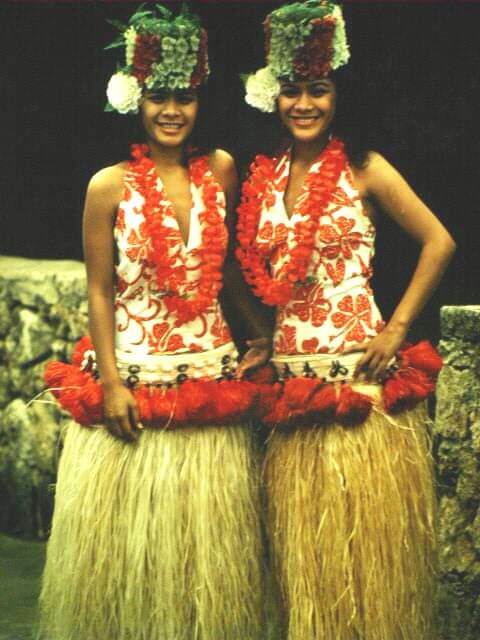
The ‘ku’u poʻo,’ also known as the classic Hawaiian dress for women, is a skirt that can vary in length depending on the location where it is being danced. Women are encouraged to expose their legs and upper bodies while wearing traditional hula costumes. Therefore, Hawaiian dresses for women have a more modern appearance with dresses and skirts matched with high-heeled shoes. No matter the sort of dance she performs, a kānaka maoli (Native Hawaiian) lady will typically wear her hair down. However, if you have a lighter complexion, there may be certain aspects of your appearance, such as your makeup or nail polish color, that are inappropriate.
Male Traditional Hula Costumes
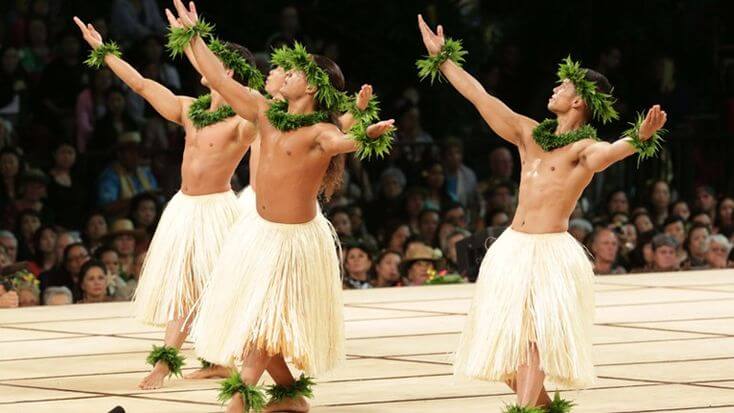
In order to protect their genitalia while dancing, men generally don a loincloth, known as the ‘pāʻū,’ with traditional hula outfits. However, because wearing one might be perceived as an insult by some dancers, it’s not always seen on stage. There are various types of ‘pāʻū,’ such as the ‘ao (loose) and tihemaile (tighter fitting), which reduce movement during dancing. Although this will mostly depend on what kind of event you’re going to, such as a luau or church, a wahi kapa or kalaaua may also be worn over the top if you’re at home watching your friends perform.
Merrie Monarch
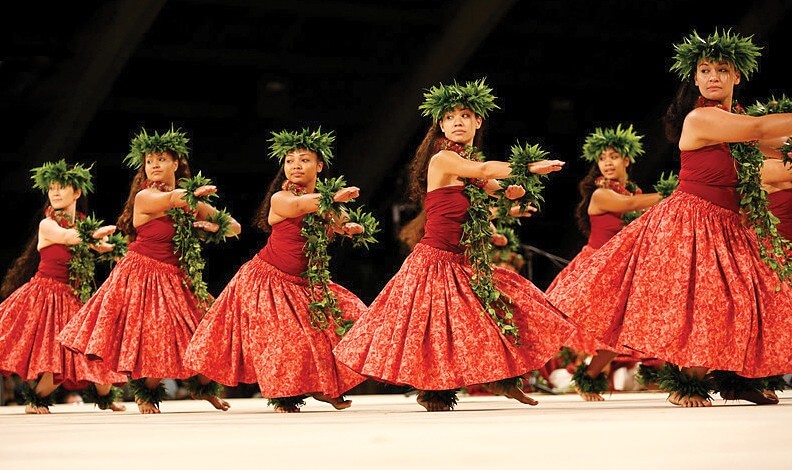
Hawaii’s Merrie Monarch is a seven-day celebration of hula and Hawaiian culture. It is one of Hawaii’s most prominent events and the state’s largest cultural gathering. More than 100 hālau from all across Hawai’i (the Islands) play throughout the Festival, which also features a number of concerts, art exhibits, and seminars. The annual Merrie Monarch Festival honors the distinctive hula kahiko (traditional Hawaiian dance) dancing style and its ongoing applicability in contemporary life.
Although they can be fairly expensive to buy commercially because of the strong demand for handcrafted pieces from artists who frequently cannot manufacture enough inventory to keep up with requests of larger suppliers worldwide, traditional hula costumes are frequently surprisingly easy to make.
The Festival has been held at Hilo Civic Auditorium, a historic building that is also prominently featured in Hawaii’s traditional hula costumes since it started more than 50 years ago.
In traditional music hula, the clothing is thought to convey a dancer’s personality and state of mind while on stage. Traditional hula costumes are often red, black, yellow, or white, with some variation in whimsy according to the particular dancing style. It is done by twisting a hula hoop around the waist in Western culture, using it as an extension of the body.

